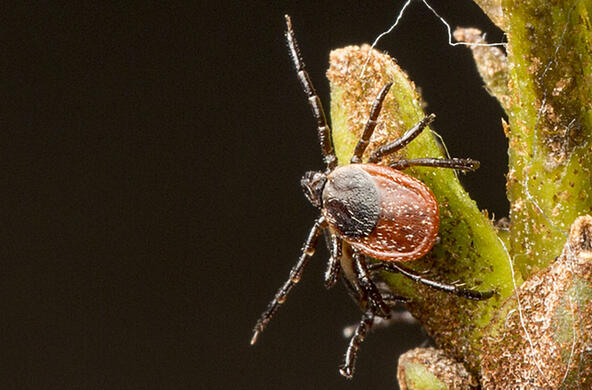The climate crisis is making us more vulnerable to ticks in an unprecedented and growing threat to public health, according to a new report.
Bacterial and protozoan tick-borne diseases doubled in the United States between 2004 and 2016, the report notes, and in 2017, more than 90% of the 60,000 vector-borne diseases in the United States were linked to these particular bloodsucking bugs.
The warmer temperatures brought by the climate crisis, in addition to ecological changes and reforestation, have extended the bugs' range into regions that had not seen certain types of ticks for many decades, if ever. And the report published in the New England Journal of Medicine Tuesday warns that we should be "bracing for the worst."
The lone star tick, a tick distinguished by a white dot -- a "lone star" -- on the back of the female of the species, had been commonly found in the South. Global warming has made more regions tick-friendly. Now it also lives in the Upper Midwest, in the Northeast, and has even moved into eastern Canada.
Warmer temperatures may also extend their "active season," researchers said, and make them much more abundant.
The good news -- if there is good news when it comes to ticks -- is that lone star ticks don't carry Borrelia burgdorferi, the main bacteria that causes Lyme disease. But they do carry the bacteria that causes southern tick-associated rash illness, or STARI, a rash similar to Lyme disease that also comes with fever, fatigue, headache and muscle pains. While doctors know to watch for Lyme disease, STARI has been less common and is often misdiagnosed, the report said.
The lone star ticks also cause tularemia, known as rabbit or deer fly fever, a rare infectious disease that attacks the skin, lymph nodes and eyes; ehrlichiosis, a bacterial infection that can cause flu-like symptoms; Heartland virus disease, a virus that can also cause flu-like symptoms and often leads to hospitalization or even death; and alpha-gal syndrome, also known as red meat allergy.
And these ticks are "aggressive," according to Richard Ostfeld, a disease ecologist with the Cary Institute of Ecosystem Studies who studies Lyme and other tick-borne diseases. Ostfeld is not affiliated with the new report.
" 'Aggressive' is a weird word to use with ticks, but they actually chase you and are very different from our wimpy black-legged ticks, the ones that have brought us Lyme disease. Those are slow, deliberate crawlers, who would have a hard time making it across my desk in half a day," Ostfeld said. "Lone star ticks can detect you and they basically run after you. They are really upsetting. It feels like they are hunting you.
"Well actually, it doesn't just feel like that. They are hunting you."
He said it's good to raise awareness about the problem now -- he only wishes it went further to encourage public health leaders to be more proactive. Instead of just surveilling the diseases ticks cause, as the report suggests, he hopes governments will invest in more tick research and create a surveillance program for this tick and for others.
"There is so much we don't know. We don't know which hosts are more responsible for supporting their numbers. We don't know which hosts are good at destroying them. We don't know how to control them without nuking them with chemical pesticides that could also kill other things we don't want to kill," said Ostfeld.
With the climate crisis, that kind of research will be key, since ticks will continue moving into additional areas. That's what happened with the black-legged ticks, Ostfeld said.
About 30 years ago, black-legged ticks in the United States were primarily in coastal areas with warmer and wetter climates. The warming climate made additional areas "increasingly suitable" for ticks to take up residence, he said, bringing disease with them. The lone star tick will likely follow suit and, like other ticks, it will continue to spread disease among humans and animals.
That's already happening. Tick-borne encephalitis was found in the UK for the first time, according to an October study.
"I think it is not enough to assume these diseases are going to run rampant and our only recourse is to monitor the disease," said Ostfeld. "We need to be more aggressive to figure out how to control the tick population and how to make people more aware of the safety concerns ticks cause pets and people."







